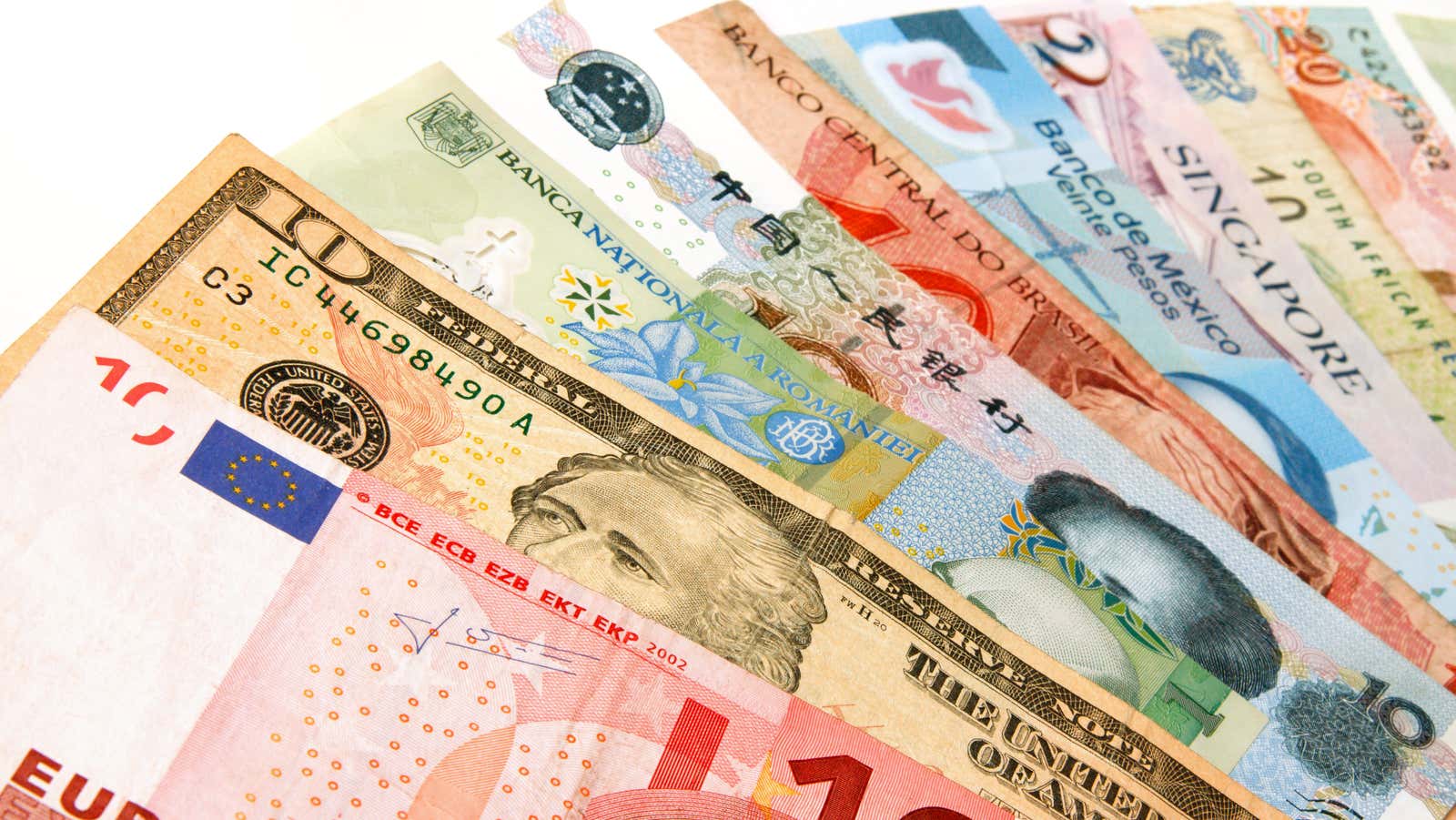The Easiest Ways to Exchange Currency

At some point we’re going to hit the road again to see the world, and if you’re new to international travel, you might be wondering how to exchange currency. Here are your options.
Exchange at your bank
Most major banks will exchange your US dollars for foreign currency. It’s important to go to your branch or call customer service to first see if they offer this and if they can get the foreign exchange you need.
Note that this must be your bank: banks will only allow you to exchange USD for foreign currency if you have a checking or savings account (or, depending on the bank, a primary credit card) with that bank. A bank is your best option for currency exchange: most do not charge any currency exchange fees and provide the most up-to-date exchange rate.
Here is some information on the major banks offering currency exchange:
Bank of America
- Can be ordered online for a minimum of $ 100
- Currencies up to $ 1000 will be mailed (excluding weekends).
- Currency over 1000 dollars will need to be picked up at a bank branch.
- BOA does not charge any conversion fees
- Standard waiting time – 1-3 business days
CitiGroup
- Call to set up currency exchange
- The money is immediately debited from your bank account
- $ 5 service fee for exchanges up to $ 1,000.
- The currency will be sent to your office, home or bank branch free of charge.
- $ 10 Standard Overnight Shipping, $ 15 Priority Overnight Shipping, $ 20 Saturday Night Shipping
- Will redeem foreign currency for a commission of $ 5 if the amount is less than $ 1000.
Wells Fargo
- Can be ordered by phone, online and in person
- Order online for at least $ 200
- Currency over $ 1000 will be sent by mail.
- Buy back unused currency
- Standard waiting time is 2-7 business days.
Exchange at the airport
After you pass the airport security check, you will see many places offering currency exchange. Travelex is one of the world’s major currency exchange brands, but there are many; they will have signs with images of foreign currency symbols, so you cannot miss them.
Currency exchange at the airport is usually more expensive than any other method. They charge a pretty decent commission, although the percentage varies from place to place.
Wait to receive currency at your destination
When exchanging US dollars, it is sometimes best to wait until you reach your destination. Once you have done this, you can usually find currency exchange offices similar to those you see at airports. They are common in tourist areas, near hotels, and also near or within shopping centers. A good rule of thumb is to make a map of where they are, as well as where you are staying, before reaching their destination.
These locations generally have lower fares than airports, but there is a commission charged on exchanges. You can check with a foreign bank at your destination to make sure you are getting a fair rate. If you are looking for a foreign exchange kiosk, you can identify a reputable one by an illuminated active foreign exchange rate board. These places will also ask for a passport (make a copy). Finally, they will give you an exchange receipt.
Beware of exchange offices, the rates of which are not visible in plain sight, do not ask for a passport and do not try to make an exchange through a calculator.
Use an overseas ATM
By using a foreign ATM machine, you can automatically receive foreign currency without having US dollars with you.
The ATM will work the way you are used to, with one notable difference: after you select “withdraw funds,” a prompt appears with two options.
- Save the exchange in foreign currency (always displayed on the left)
- Convert to USD (always displayed on the right)
The ATM asks if you want the payment to be charged exclusively in foreign currency or if your bank recognizes this as a foreign transaction in US dollars. Always keep it in foreign currency. When you select the option on the right (convert to US dollars), you are always charged more for the conversion. This option will offer you an overseas transaction fee (depending on your bank or credit card), a conversion fee, and an additional fee. So, select the option on the left.
Also, don’t forget to have your passport with you in case your card gets stuck. You want to be able to call the ATM service number (or go to the front desk / owner of your facility) for help and be able to prove that the card belongs to you in order to obtain it.